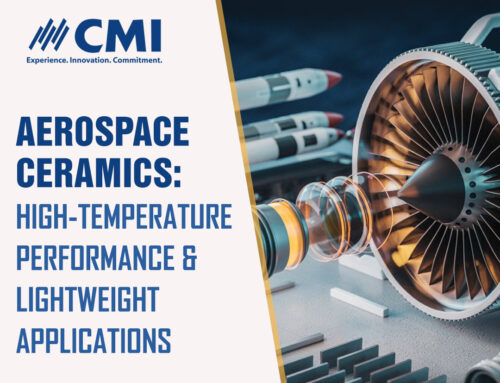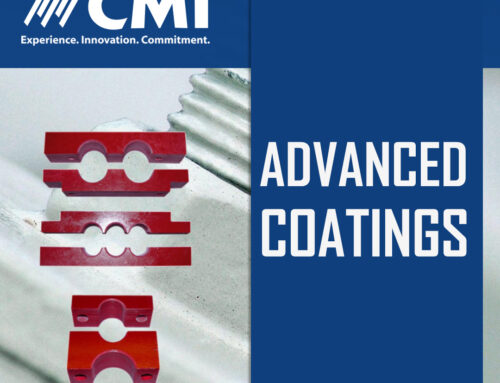Advanced ceramics play a crucial role in modern technology and industries. These materials stand out for their exceptional strength, versatility, and durability, making them indispensable in various fields like aerospace and healthcare. With unique properties such as high thermal resistance and electrical insulation, they pave the way for significant innovations.

In the aerospace sector, advanced ceramics withstand extreme environmental conditions. Their lightweight nature and extreme temperature and wear resistance make them ideal for engine components and heat shields. Similarly, they are used for implants and prosthetics in healthcare, given their biocompatibility and ability to integrate with biological tissues.
The future of advanced ceramics holds exciting possibilities. Researchers continue to explore new applications and enhance the functionality of these materials. As technology evolves, advanced ceramics are expected to become even more integral across multiple industries, driving efficiencies and technological advancements.
Key Takeaways
- Advanced ceramics are vital for their strength and versatility.
- They are crucial in sectors like aerospace and healthcare.
- Ongoing research is expanding their applications and benefits.
Fundamentals of Advanced Ceramics

Advanced ceramics are essential in diverse fields like aerospace, automotive, and medicine. They are characterized by their unique properties, such as high strength, heat resistance, and durability.
Material Composition
Advanced ceramics typically contain compounds such as oxides, carbides, and nitrides. Common materials include alumina, silicon carbide, and zirconia, which contribute to ceramics’ high melting points and hardness. Alumina, for example, is known for its excellent thermal conductivity and corrosion resistance. Silicon carbide is valued for its strength and thermal shock resistance, making it popular in abrasive and cutting tool applications.
These materials often improve modern engineering applications by offering solutions where traditional materials might fail.
Manufacturing Processes
Manufacturing advanced ceramics includes several steps such as powder preparation, shaping, and sintering. Initially, raw materials are converted to a fine powder. This powder is then shaped into a desired form using extrusion, pressing, or casting methods. Sintering, a process that heats the material just below its melting point, follows to enhance its strength and density.
These methods ensure that the ceramics meet the demands of industries like aerospace and electronics by creating products with precise shapes and improved mechanical properties.
Categories of Advanced Ceramics
Advanced ceramics can be categorized based on their properties and applications. Structural ceramics, known for their mechanical strength, are used in engine components and cutting tools. Functional ceramics, which include piezoelectric and ferroelectric materials, are used in sensors and actuators due to their ability to convert electrical signals into mechanical movement and vice versa.
Bioceramics, another category, find applications in medical implants and prosthetics due to their compatibility with biological tissues. Each category offers distinct advantages, making advanced ceramics indispensable in various modern engineering applications.
Properties and Characteristics

Advanced ceramics boast distinctive qualities such as durability, heat resistance, and electrical functionality. These features make them essential for industries like aerospace and medical devices, where performance and reliability are crucial.
Mechanical Properties
Advanced ceramics are known for their exceptional hardness and strength. They often surpass metals in terms of wear resistance, making them ideal for applications where longevity and minimal wear are vital, such as cutting tools and wear-resistant coatings.
These ceramics also exhibit high fracture toughness, meaning they can resist breaking under stress. This makes them useful in aerospace applications where materials undergo significant mechanical stress.
While challenging, they are also brittle and need careful handling and installation.
Thermal Properties
Advanced ceramics can endure high temperatures without degradation, essential for industries requiring heat resistance. They have low thermal expansion, making them stable under temperature changes. This stability is beneficial in settings like engine components, where fluctuating temperatures are ordinary.
Due to their excellent heat resistance, these ceramics can act as insulators or conductors, depending on the application. This property helps medical devices function effectively in environments demanding precision and control.
Electrical Properties
Some advanced ceramics are excellent electrical conductors, while others are insulators. This versatility makes them valuable in electronic components like capacitors, resistors, and insulators. Their dielectric properties help store and release electrical energy efficiently.
These properties are essential in applications like optoelectronics, where precise electricity control is critical. These ceramics also provide stability in environments exposed to electromagnetic interference, preserving device functionality and safety.
Applications in Aerospace

Advanced ceramics are crucial in aerospace, providing solutions like thermal protection and structural components. These materials transform modern engineering applications with unique properties such as heat resistance and lightweight strength.
Thermal Protection Systems
Aerospace thermal protection systems (TPS) are vital for spacecraft and high-speed aircraft. They shield these vehicles from extreme temperatures during re-entry into Earth’s atmosphere. Advanced ceramics are ideal for TPS because they can withstand high temperatures while remaining lightweight. This allows spacecraft and aircraft to stay efficient and safe.
For example, silicon carbide is frequently used in TPS because it can endure heat without breaking down. These ceramics’ heat resistance and low density make them essential for safely and practically entering the harsh conditions of space travel.
Structural Components
Ceramics benefit aerospace structural components due to their strength and toughness. These properties make them suitable for engine parts, airframe structures, and other critical elements. Advanced ceramics provide durability without adding excessive weight to the aircraft.
Materials like alumina and zirconia are commonly used. They offer high thermal resistance and mechanical stability. In addition, they provide exceptional wear resistance, enhancing the longevity of aerospace components. Due to these properties, ceramics are increasingly incorporated into commercial and defense applications, offering performance advantages over traditional materials.
Biomedical Applications
Advanced ceramics are crucial in modern medicine, especially in creating durable and biocompatible components. They enhance performance and longevity by transforming prosthetics, implants, and dental applications.
Prosthetics and Implants
Advanced ceramics are essential in prosthetics and implants due to their strength and biocompatibility. These materials are used in joint replacements, such as hips and knees, because they can endure the mechanical stress of daily movement. Ceramics like zirconia provide wear resistance, reducing the risk of inflammation.
In orthopedics, advanced zirconia ceramics are utilized to create skeletal prosthesis components, thanks to their ability to resist corrosion and biological degradation. Ceramics’ non-reactive nature minimizes the risk of adverse body reactions, improving patient outcomes. Ceramic’s low thermal conductivity makes it suitable for implants in heat-sensitive body areas.
Dental Applications
Advanced ceramics offer aesthetic and functional benefits in dentistry. Due to their natural tooth-like appearance, materials such as porcelain and zirconia are widely used in crowns, bridges, and veneers. Ceramics’ durability ensures long-lasting dental restorations that are robust enough to withstand biting and chewing forces.
Ceramics also benefit dental implants as they integrate well with bone, providing stable and long-lasting support for prosthetic teeth. Their non-toxic nature prevents adverse reactions, making advanced ceramics a preferred choice for dental professionals who aim to enhance patient satisfaction. Modern engineering applications continue to refine these materials, improving their properties and performance in diverse biomedical applications.
Innovation and Future Trends
The future of advanced ceramics is shaped by ongoing research and technological advancements. Innovations in materials and applications hold the key to developments in this field, which is critical for various engineering sectors.
Research and Development
Research into advanced ceramics focuses on enhancing their properties to meet modern engineering needs. Efforts are geared toward improving strength, durability, and heat resistance. This research has spurred interest in areas such as 3D printing of ceramic materials, which could revolutionize manufacturing processes.
Ongoing studies aim to increase the electrical conductivity of ceramics, making them suitable for electronics. Researchers are also examining the role of ceramics in energy storage systems, which could drive innovation in battery technology. By exploring new compositions, scientists hope to push the boundaries of what ceramics can achieve.
Emerging Technologies and Materials
Emerging technologies are leveraging ceramics’ unique properties to innovate in various fields. One area of interest is fiber-reinforced ceramics, which offer improved toughness. These materials are suitable for demanding environments in the aerospace and defense industries.
New types of ceramics are being developed to address environmental challenges. Some of these materials are engineered to be more environmentally friendly, which is crucial in today’s climate-focused world. Also, the incorporation of polymer-derived ceramics is growing, as they offer customized properties tailored to specific industry applications.
Frequently Asked Questions
Due to their unique properties, advanced ceramics are valuable in various industries. They offer numerous benefits over traditional materials, including improved performance and adaptability for specialized applications.
What are the typical applications of advanced ceramics in industry?
Advanced ceramics are used in various industries, including electronics, automotive components, medical devices, and aerospace applications. They are also used in insulators, filters, and prosthetic implants. Their durability and resistance to heat and wear make them suitable for harsh environments.
How do advanced ceramics enhance material performance over traditional materials?
Advanced ceramics provide superior hardness, thermal stability, and corrosion resistance compared to traditional materials. This results in longer-lasting components that perform well under extreme conditions. These characteristics allow for advancements in fields that demand high precision and reliability, such as electronics and medical technology.
What challenges are faced during the manufacturing process of advanced ceramics?
Manufacturing advanced ceramics involves challenges like achieving uniformity and minimizing defects. The processes require precise control of temperature and composition to ensure quality. Equipment and techniques must be tailored to maintain the integrity and desired properties of the ceramic materials.
In what ways does the composition of advanced ceramics vary from conventional ceramics?
The composition of advanced ceramics often includes engineered additives and specific grain sizes to enhance their properties. Unlike conventional ceramics, they are designed for specialized functions in high-technology applications. This tailored approach allows them to meet the specific demands of various industries.
Can you describe the key mechanical properties of advanced ceramics?
The key mechanical properties of advanced ceramics include high hardness, low density, and excellent thermal conductivity. They also exhibit impressive resistance to compression and thermal shock, enabling their use in applications where traditional materials might fail due to extreme conditions.
What technological advancements have impacted the development of advanced ceramics?
Advancements in processing techniques and materials science have significantly advanced the development of advanced ceramics. Technologies such as 3D printing and nanotechnology enhance precision and performance. These innovations allow for greater customization and efficiency in manufacturing, further expanding the possibilities for their applications.






